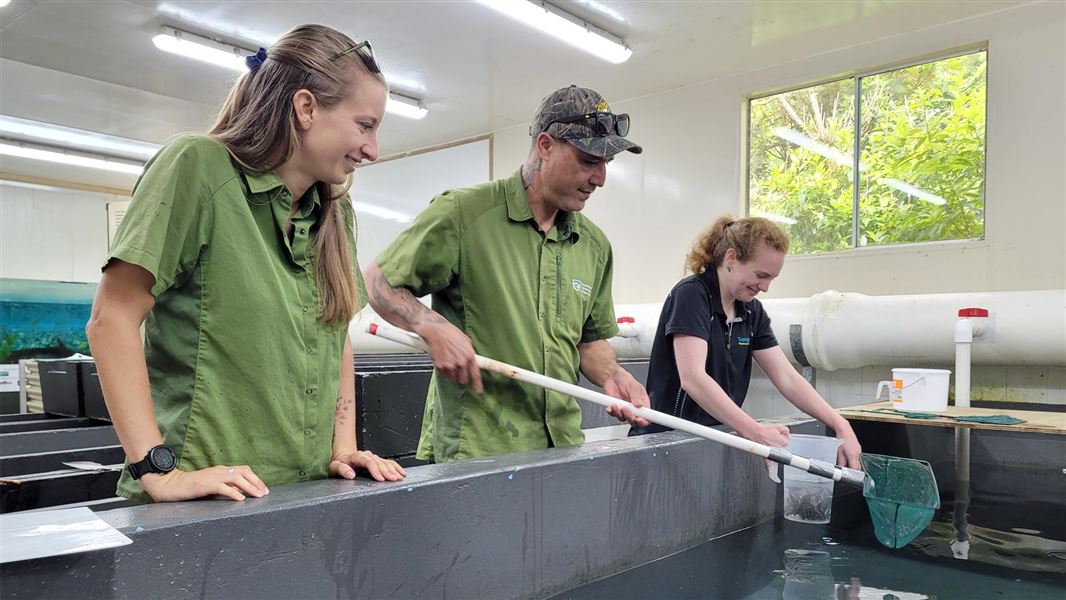
Introduction
The Taupō fishery team is helping support the recovery of endangered tara iti / NZ fairy tern.Date: 31 March 2023
This ground nesting seabird is classified as Nationally Critical having suffered a dramatic decline since the 1970’s thanks to a combination of factors including habitat loss and predation by invasive pests. The population in the wild is estimated at only 40 individuals and that includes approximately 9 breeding pairs.
A Recovery Plan is in place to save the bird from extinction and a dedicated team of DOC Rangers works closely with community volunteers and other partner organisations. A captive rearing programme aims to increase the survival rate of chicks. The young chicks have very specific food requirements, so finding the right substitute for their wild diet can be a challenge. The Taupō fishery team helped find a solution – fingerlings from our trout hatchery in Turangi. A successful pilot revealed juvenile trout are a good option for growing chicks, being an ideal size and shape.
Taupō fishery staff rear trout in a specialised hatchery at the Tongariro National Trout Centre. These fish are destined for release into a pond to support the Kids Fishing Programme which is delivered by the Trout Centre Society. The Taupō Fishing District is a totally self-sustaining wild trout fishery so there is no requirement for additional stocking to support the fishery.
Each year wild rainbow trout are processed through a fish trap on the Waihukahuka Stream as they migrate upstream to spawn. A small number of these trout are stripped of eggs and milt. The result is approximately 10,000 young trout reared per year.
Looking ahead, the plan is to increase the number of trout reared at the hatchery to align with the projected needs of tara-iti – in effect, trout helping to save the most threatened breeding bird in New Zealand from extinction
